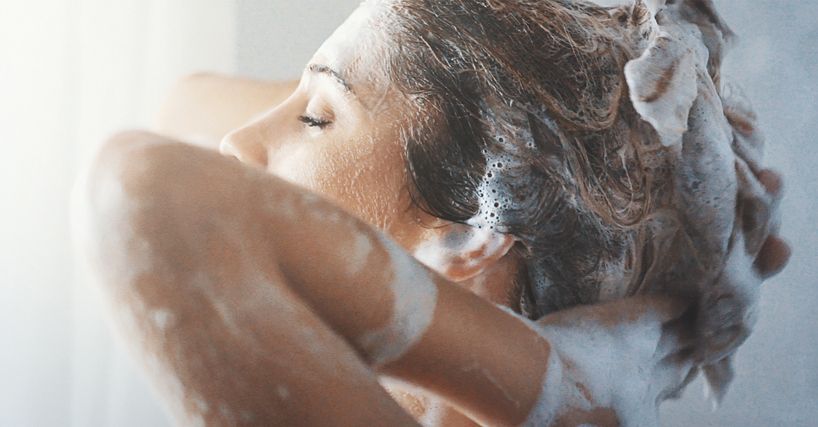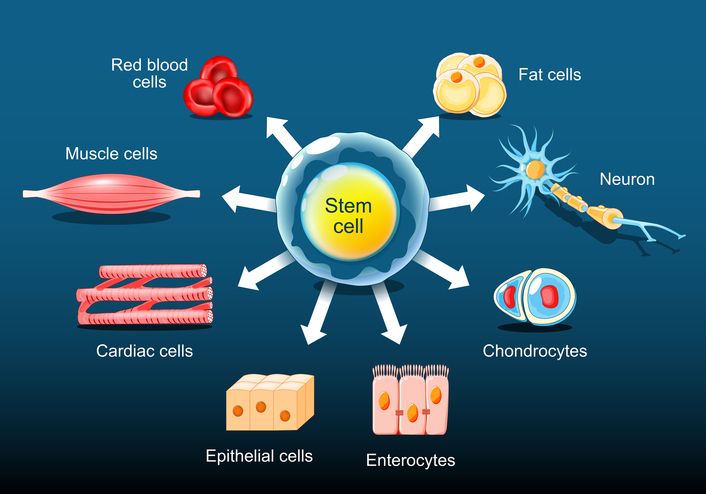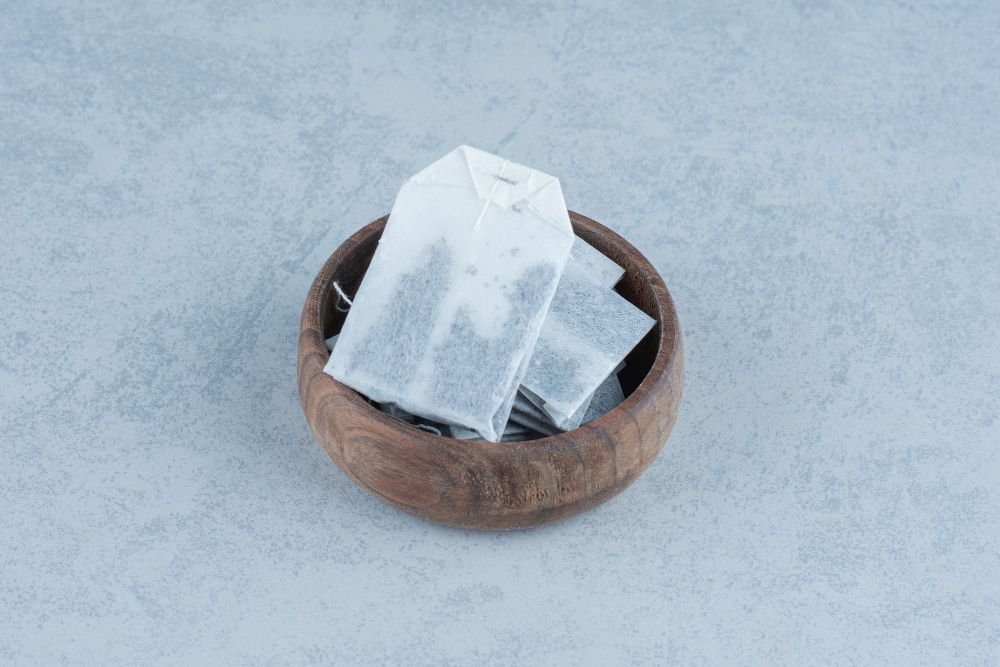
Book Now to Experience
Acne Treatment
1 Minute Self-Registration
Date should not be before minimal date
Author: Leila Tan|Updated: 23 July 2024
Although developments in acne treatment have made it easier for many people to manage their condition, many still resort to "spot treatments" when they lack the time or motivation to pursue a more permanent solution. If you have never heard of this, continue reading to see how spot treatments can prevent further outbreaks.
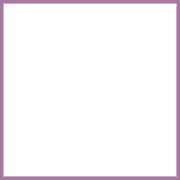
1
What Does Spot Treatment Mean? The Science Behind the Breakouts
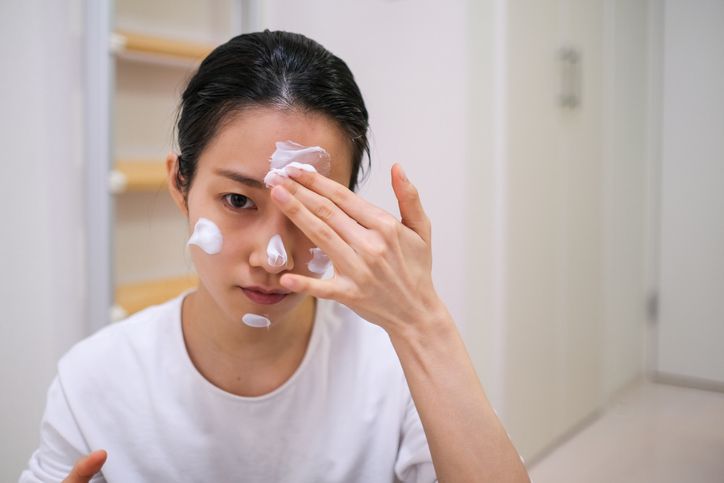
Acne is a skin condition commonly brought on by clogged hair follicles. Lesions, often known as pimples or zits, form when the oil produced by the skin to prevent drying out, sebum, and dead skin cells combine to block pores. The face is the most common location for the blemishes, but they can also show up anywhere else on the body. Acne can cause a wide array of lesions or pimples. When hair follicles become clogged or swollen, a medical word for the condition is comedones.
This is where spot therapy for acne comes in. Over-the-counter spot treatments work by applying acne-fighting chemicals directly to a pimple. These potent vials and tubes contain specific substances that will unclog the infected, clogged pore and prevent the pimple from spreading and worsening. Nonetheless, many individuals wrongly believe that these active ingredients are a panacea, so they apply them all over their skin, causing their face to seem awful because they do not comprehend why acne spot treatments do not work for their acne type.

2
Why is Spot Treatment Not Working For Me?
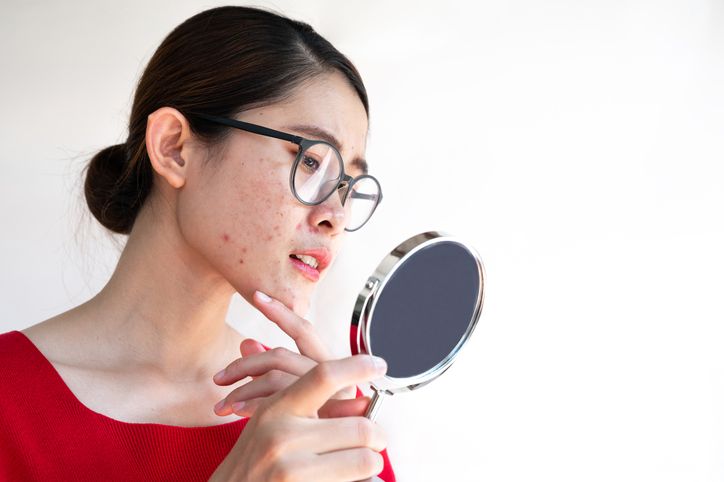
To make your spot treatment work, you must first know the acne types and spot treatment is most suitable to treat which type of acne. Types of acne includes:
Whiteheads
Whiteheads, also known as "closed comedones," are one of the most common kinds of acne. They manifest on the skin as small to medium-sized, typically white or skin-coloured pimples. Whiteheads are caused by the clogging of a pore with a mixture of dead skin cells and sebum. This blocked pore becomes surrounded by a layer of skin and pus grows inside. This pus is responsible for the white look of the whitehead (and name). In contrast to pustules (see below) and the majority of other acne breakouts, whiteheads are noninflammatory blemishes.
Blackheads
Blackheads are sometimes known as "open comedones" because they appear as dark spots on the skin. Blackheads, like whiteheads, are caused by clogged pores. In contrast to whiteheads, these clogged oil and skin cells are exposed to air. The dark look of the clogs results from their interaction with oxygen, which causes them to change colour. Contrary to popular assumption, blackheads are unrelated to cleanliness. Always remember, if you have blackheads, you are not unclean! This dark substance is simply natural oil and skin. And because blackheads are really just extremely clogged pores without inflammation or infection, they are classified as noninflammatory.
Papules
Acne papules are the red, puffy lumps that many of us consider to be "normal" breakouts. Similar to other acne lesions, papules are caused by the clogging of pores by excess oil and dead skin cells. The buildup of pressure within a clogged pore might cause the pore's walls to burst, releasing unpleasantness into the surrounding skin. The red and bloated appearance of papules is caused by your immune system's response to the rupture, which is inflammation. After a few days, the majority of papules transform into pustules, which are more apparent skin lesions.
Pustules
In response to the body's immune system, papules can develop into pustules. Pustules seem like classic pimples because the red bumps acquire a bloated white or yellow cap. Can't tell if it's a pustule or a whitehead on your face? Pustules are surrounded by redness and swelling because of inflammation. Although whiteheads don't cause inflammation, they shouldn't be as irritated as other types of acne. Acne can appear everywhere on the body, but the face, chest, and back are the most prevalent areas.
Nodules
Acne nodules are a severe form of acne that can be difficult to treat. They resemble papules but begin deeper within the skin's layers, making them difficult to cure and practically impossible to pop. Nodules appear as red or skin-coloured lumps, and they never have a "head" like whiteheads and pustules. They are rigid and abrasive to the touch. Acne nodules can occur by themselves or in painful regions throughout the skin. Occasionally, nodules interact with similarly painful cysts to form nodulocystic acne.
Cysts
Cystic acne is another form of severe acne that develops deeply below the skin's surface. Like nodules, cysts resemble deep, crimson lumps. In contrast to nodules, however, cysts are filled with pus or other liquids and have a squishy texture. Both can be extremely tender and unpleasant. Cystic acne is prevalent throughout the face and jawline, as well as on the back. Cysts are a very persistent kind of acne, persisting for weeks or months despite being caused by the traditional trio of excess oil, dead skin, and bacteria.

3
I Know My Acne Type! Why It Still Doesn't Eliminate My Skin Concerns?
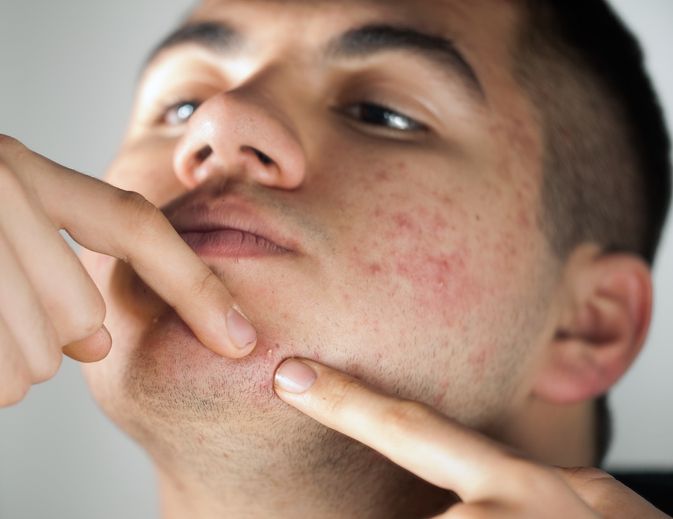
They only work on small papules (solid, red bumps) and pustules (pus-filled bumps) on the skin's surface. They won't treat serious acne problems like nodules or cysts, which form deeper in the skin and can't be reached by spot treatments.
Spot treatments can help reduce the redness, swelling, and pain of inflamed pimples or loosen or dissolve the blockages in pores that cause blemishes in the first place. It can also treat acne in a targeted way, keeping the side effects of some treatments away from skin that doesn't have acne (e.g., drying and redness)
Some spot treatments need to be left on overnight, while others dry clear and can be worn all day. Still others are coloured to help hide red, swollen pimples.
There are many kinds of spot treatments for acne, from cheap ones you can get at the drugstore to more expensive brands. It doesn't really matter which one you choose as long as it has one of the four proven acne-fighting ingredients: benzoyl peroxide, salicylic acid, sulphur, or adapalene.

4
How to Use Acne Spot Treatment Cream? Know Them Before Putting Them On Your Face
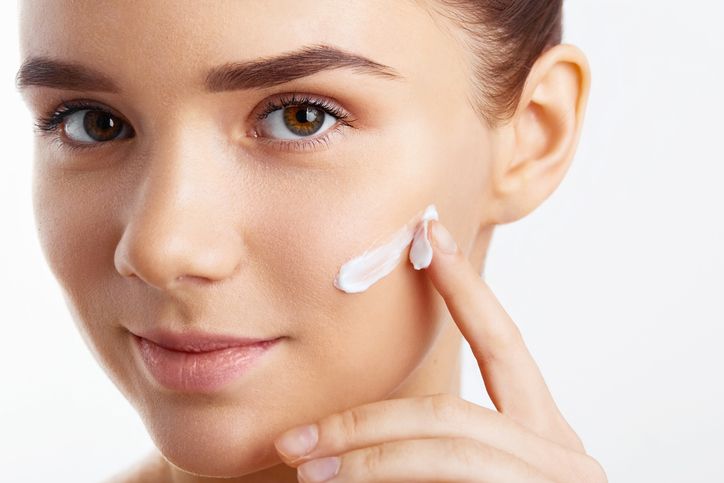
You should use your treatment creams based on the ingredient it contains. Here are the 4 most common active ingredients you can find that can help with a blemish prone skin.
Benzoyl Peroxide
The best over-the-counter treatment for acne is benzoyl peroxide. It is sebostatic, which means it can stop the production of sebum, an oily skin substance that helps block pores. It is also comedolytic, which means it stops or slows the growth of blackheads and whiteheads. Because it is antimicrobial, it can stop Cutibacterium acnes, the main acne causing bacteria
Even so, benzoyl peroxide can cause side effects, especially in people with sensitive skin, such as dry skin, redness, or even a burning sensation. Benzoyl peroxide effects tend to be dose-dependent. To be safe, start with just a small amount once a day and work your way up to twice a day if your skin can handle it.
Salicylic Acid
Salicylic acid is a type of acid that works best on blackheads, whiteheads, and mild acne. It works as an exfoliant, which means it helps get rid of dead skin cells on the skin's surface that can block pores.
Depending on how the spot treatment is made and how much salicylic acid is in it, you may need to use it one to three times a day. Salicylic acid can cause tingling or stinging, itching, redness, or even peeling of the skin, so it's best to start slowly and add more as needed.
Sulphur
Sulphur is another ingredient that helps acne, blackheads, and whiteheads that aren't too bad. It fights acne by making Cutibacterium acnes and other bacteria that cause acne uncomfortable.
It has strong antimicrobial effects, but they don't work as well for moderate to severe inflammatory acne. Sulphur is easier on the skin and may be the best choice for people with sensitive skin. Most of the time, you can use a spot treatment with sulphur two or three times a day.
Even though sulphur-based spot treatments are gentler, they can still cause side effects like dry skin or irritation of the skin.
Alpha lipoic acid
Alpha lipoic acid used to be found in most anti-aging skincare products, but now it is also a popular spot treatment for acne because of its anti-inflammatory and antioxidant properties. Whiteheads, blackheads, and pimples can be gotten rid of with these products because they dry out the problem areas and make the top layer of skin peel.
ALA is good for people who want to make their skin brighter, even out their skin tone, improve its texture, reduce signs of ageing, or stop signs of ageing from happening in the future. But alpha hydroxy acids can cause irritation and make your skin more sensitive to the sun. Irritation symptoms include redness, burning, itching, pain, and maybe even scarring.
No matter what active ingredients your acne spot treatment contains, you must adhere to the recommended dosage and usage recommendations for it to be effective.
To apply spot treatment cream, perform the following 5 steps:
1. Wash your face with a gentle cleanser and pat dry with a soft towel. 2. Take a pea-sized amount of spot treatment cream, apply directly to each breakout on the area with blemish – don’t rub it in or spread it around. 3. Let the cream absorb into your skin before going on with your regular skincare routine (like moisturiser). 4. Avoid touching the affected area unless you’re applying more spot treatment cream since fingers can transfer more oils and bacteria onto the spots. 5. Repeat this process twice daily until the outbreaks are gone or have significantly improved in size or reduce redness. Be patient as it may take several weeks for acne spots to clear up completely.

Book Now to Experience
Acne Treatment
1 Minute Self-Registration
Date should not be before minimal date

5
5 Common Mistakes You Probably Make When You Are Trying Acne Spot Treatments
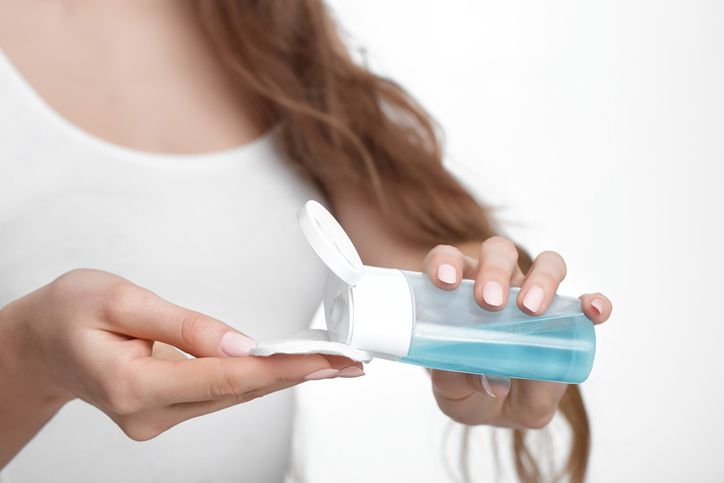
You did not follow your usual care routine.
You shouldn't abandon the rest of your routine just because you think you've found the miracle product that would make all of your imperfections vanish overnight. Often, spot treatments are applied before bedtime, after cleansing, toning, and moisturising. If you prefer to use an acne patch during the day, apply it after you've finished your usual morning routine.
Moisturising products were flatly refused by you.
Even if you are acne or oily based, you shouldn't avoid using moisturiser. Choose a gel-based moisturiser that is oil-free and non-comedogenic if you want to stay hydrated without making your acne worse. In fact, a moisturiser is an absolute must if you're using a spot treatment, and this is especially true if the spot treatment is abrasive or has the potential to dry the surface of the skin (such as many acne treatments). In order to avoid getting burns or a rash, you shouldn't use any irritants or home remedies afterward.
Is this the right sequence? Is there even a right sequence?
Spot treatments should be applied after cleaning and toning but before serums and moisturisers. Spot treatments are most effective when used on specific areas that are clean, and their efficacy may be diminished if used over a heavier moisturiser or oil. On the other hand, if you're just testing out a new product, like a retinoid, you can apply a light layer of moisturiser before using a spot treatment to lessen the likelihood of discomfort.
You're using them far too often.
You shouldn't use them several times a day, every day just because they work. If you want to reduce the appearance of the spots without irritating your skin, try using retinol, AHAs, or BHAs on alternate days. Even if you're using an acne treatment like erythromycin gel at night, your skin will still need to be hydrated during the day.
You believe in miracles.
Even fairy tales take time for the protagonists to have a happy ending, so localised interventions take time to bear fruit. Consistent use of a brightening spot treatment over time is required for noticeable improvements in the lightening of post-acne scars or other dark areas. Spot treatments with salicylic acid, glycolic acid, niacinamide, vitamin C, or arbutin will help remove any remaining pigmentation from acne within three to four months.

6
Tell Me The Best Way to Treat Acne & Get a Brighten Skin Fast.
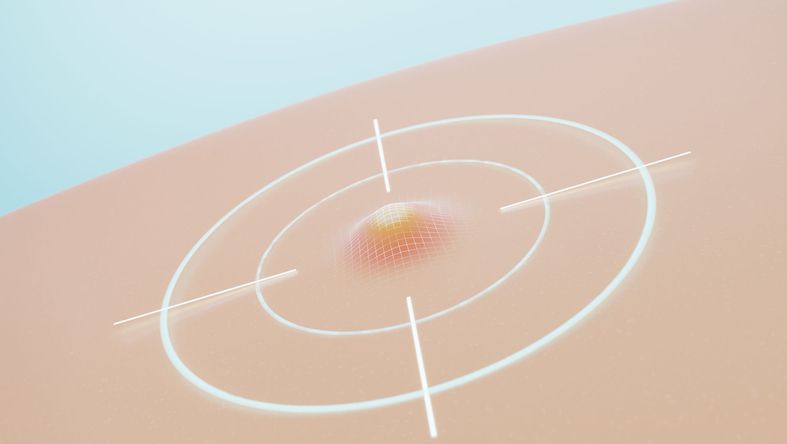
Many people combine spot treatment with other treatments for the face or for getting rid of acne to get better results. But how do you choose the right treatment that doesn't interfere with your normal life?
The Acne Treatment is a new treatment from New Beauty that is made for skin that gets acne. The Acne Treatment helps with acne, blemishes, blackheads, whiteheads, pockmarks, enlarged pores, dry skin, acne scars, and a dull skin tone.
The Acne Treatment uses dual spiral suction and drainage technology to remove dead skin cells and unclog pores at the same time. This calms inflammation and infection caused by acne. Medical-grade hydrating serum can get into the deepest layer of skin to hydrate and nourish the tissues, which calms acne-prone skin. It also calms down the sebaceous glands to stop them from making too much oil.
If you happen to pop some cysts while treating acne spots, you will see less acne, acne scars, and other forms of acne as the treatment goes on. See your skin get brighter, fuller, more hydrated, and healthier, with less oily shine. Most importantly, the Acne Treatment doesn't involve surgery, cuts, injections, acne medicine, or antibiotics that you take by mouth. This treatment is good for any skin type with moderate to severe acne. Pay a visit to your nearest New Beauty outlet today if you wish to eliminate your skin concerns fast!
FAQ
How prevalent is acne in Singapore?
One of the most prevalent skin disorders in Singapore is acne vulgaris. Adolescents and young adults are especially vulnerable; as much as 80% of Singaporean adolescents suffer from it.
Can I use retinol for spot treatment?
Retinol is technically an acne treatment, but it doesn't mix well with the active ingredients in spot treatments, especially Benzoyl Peroxide. Note that applying retinol to an active breakout will have little effect, as it works on the deeper layers of the skin. Hence, Retinol should never be used for spot treatments.
Will spot cream make blemishes worse?
Absolutely, taking too many acne medicines might aggravate the condition. In certain cases, topical treatments make minor pimples more visible, leading to an enhanced sense of acne. When used excessively, topical acne treatments containing salicylic acid or benzoyl peroxide may trigger additional outbreaks.
Is Acne Treatment painful?
Not at all. There is no pressing, poking, squeezing, or plucking of the skin, resulting in no wound and minimal discomfort.
How long is the healing process after Acne Treatment?
The Acne Treatment is a non-invasive acne elimination method that leaves no healing wounds, so there is no need to recover at home. Instead, you can continue your routines as usual.

Book Now to Experience
Acne Treatment
1 Minute Self-Registration
Date should not be before minimal date
Recommended Articles
COPYRIGHT© NEW BEAUTY MANAGEMENT LIMITED 2025. ALL RIGHT RESERVED.

